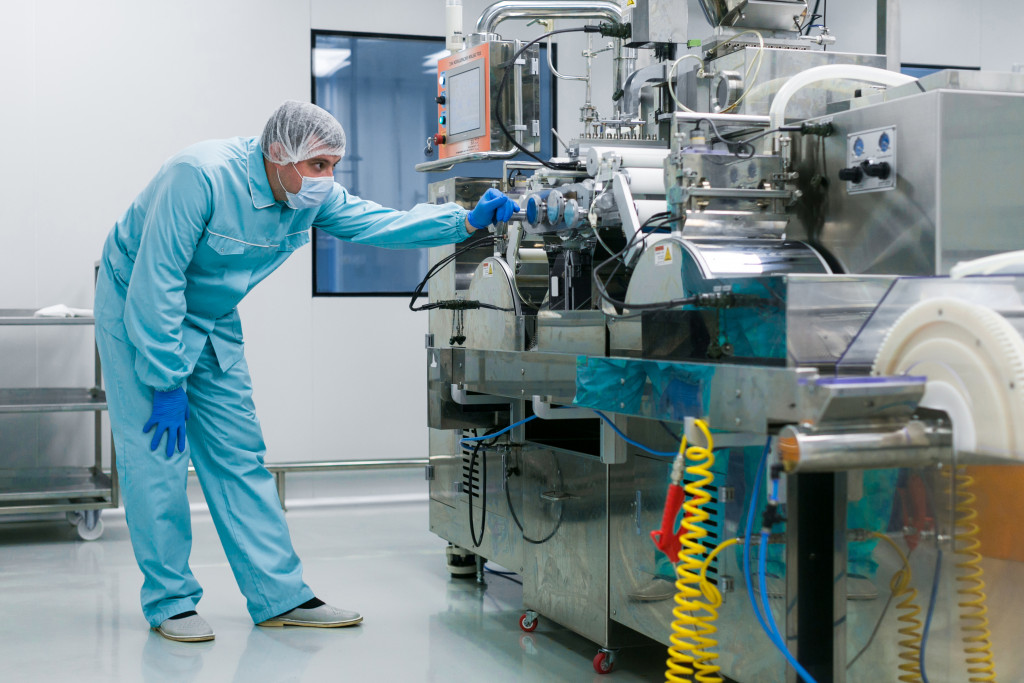- To ensure safety and sanitation, it is recommended to invest in top-quality flooring and equipment for the facility.
- Use automated technology to increase productivity, save time, and lower expenses.
- Optimize efficiency throughout the facility to ensure the end product’s consistent quality.
- To ensure customer safety and establish a positive reputation in the industry, it’s important to follow regulatory guidelines and maintain high-quality standards.
Constructing a food processing factory is no easy feat. It requires careful consideration of several factors to ensure the facility meets all regulatory standards, is efficient and cost-effective, and produces high-quality products.
This article will provide tips for creating a successful food processing factory. With these tips, you can rest assured that your new factory will meet all requirements while delivering maximum efficiency and profitability.
Establish a Safe and Sanitary Facility
Establishing a safe and sanitary facility is essential for food processing. Here are some tips for setting up a safe and sanitary facility.
Invest in high-quality flooring for food processing services

Investing in high-quality flooring for a food processing factory is crucial to ensure a safe and efficient environment for workers. The flooring must be durable, resistant to chemicals and water damage, and easy to clean and maintain. Additionally, it should have antimicrobial properties to prevent the growth of bacteria and increase hygienic standards.
In this context, high-quality flooring not only ensures the safety of employees but also reduces the risk of contamination of food products, which is a top priority in the food processing industry. By choosing the appropriate flooring, food processing companies can prevent costly repairs, minimize downtime for maintenance, and increase the longevity of their investment, making it a wise decision for both short and long-term success.
Invest in Quality Equipment
Investing in quality equipment is a crucial aspect of constructing a food processing factory. Ensuring the equipment is reliable, durable, and can withstand the rigors of day-to-day industrial use is imperative. Quality equipment is designed to perform optimally, leading to increased productivity, improved efficiency, and a higher-quality end product.
Investing in superior equipment is also an effective means of reducing downtime, maintenance costs, and the frequency of replacement cycles. Choosing the right equipment can be challenging, but with thorough research and due diligence, one can make an informed decision and ensure that the food processing factory has the best tools for success.
Utilize Automation Technology
In the competitive world of food production, it’s crucial to implement automation technology when constructing a new food processing factory. Automation technology is using technology to control and monitor production processes with minimal human intervention. Automation technology can improve efficiency, save time, and reduce costs when properly utilized.
By automating certain steps in the food production process, manufacturers can achieve more consistent results while reducing the risk of errors and contamination, ultimately leading to higher-quality products. In today’s fast-paced environment, keeping up with the latest technology trends is important to stay ahead of the competition.
Maximize Efficiency Throughout The Facility
When constructing a food processing factory, one of the most important aspects is maximizing efficiency throughout the facility. This involves carefully planning the layout, systems, and processes to ensure the food processing operation’s steps run smoothly. Achieving maximum efficiency saves time and money and helps ensure consistent quality in the end product.
The building process can be organized using expert knowledge so the entire facility functions as efficiently as possible. While it can be a complex and challenging undertaking, properly maximizing efficiency is crucial for the success and sustainability of any food processing operation.
Adhere To Regulatory Requirements

Adhering to regulatory requirements and quality standards is essential to constructing any food processing factory. Regulatory requirements aim to ensure that all products are safe and meet specific quality benchmarks while adhering to standards that promote consistency and reliability. Compliance with these regulations and standards is crucial to prevent potential hazards and diseases arising from low-quality products.
It is essential to prioritize safety and quality as it protects consumers and allows producers to build a strong reputation in the industry. To meet these requirements, it is advised that construction and production practices are carried out under the supervision of experienced professionals who understand the importance of these regulations and standards.
Develop A Sustainability Strategy For The Factory
Developing a sustainability strategy is crucial in constructing a food processing factory to ensure long-term success. It involves evaluating and implementing practices that minimize environmental impact, promote economic efficiency, and foster social responsibility. Sustainability is not only important for the well-being of the environment and the community, but it also benefits the business itself.
Sustainability efforts can reduce costs, increase efficiency, and improve brand reputation. To properly develop a sustainability strategy for a food processing factory, it is important to assess the current environmental impact and identify areas for improvement.
This may involve reducing waste, implementing energy-efficient technologies, and utilizing renewable resources. By incorporating sustainable practices into the factory’s operations, businesses can create a more resilient and profitable future.
These are some tips for creating an effective and successful food processing factory. These best practices will help you to meet regulatory requirements and efficiently produce quality products while minimizing costs for your new facility.








